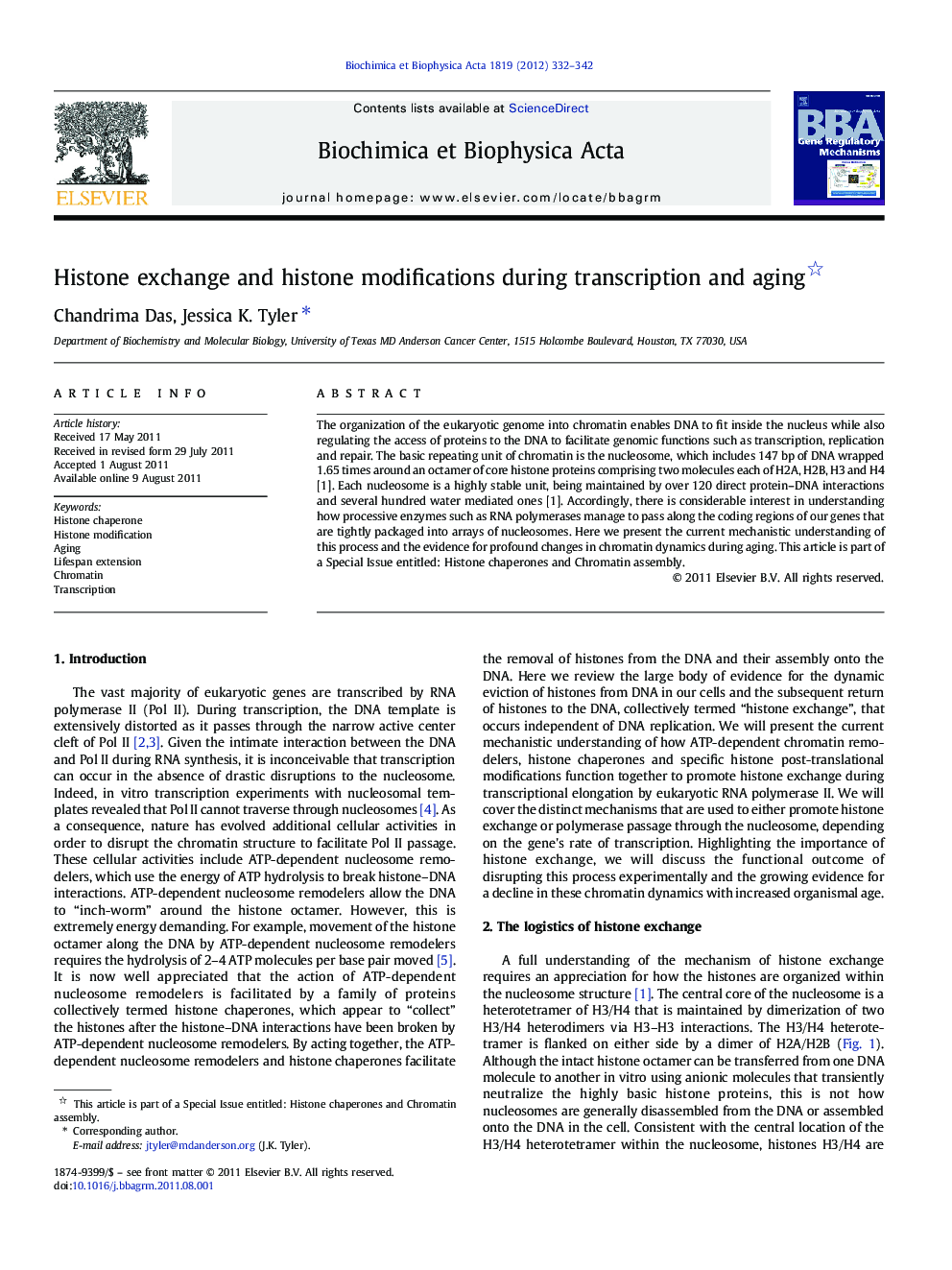| Article ID | Journal | Published Year | Pages | File Type |
|---|---|---|---|---|
| 1946538 | Biochimica et Biophysica Acta (BBA) - Gene Regulatory Mechanisms | 2012 | 11 Pages |
The organization of the eukaryotic genome into chromatin enables DNA to fit inside the nucleus while also regulating the access of proteins to the DNA to facilitate genomic functions such as transcription, replication and repair. The basic repeating unit of chromatin is the nucleosome, which includes 147 bp of DNA wrapped 1.65 times around an octamer of core histone proteins comprising two molecules each of H2A, H2B, H3 and H4 [1]. Each nucleosome is a highly stable unit, being maintained by over 120 direct protein–DNA interactions and several hundred water mediated ones [1]. Accordingly, there is considerable interest in understanding how processive enzymes such as RNA polymerases manage to pass along the coding regions of our genes that are tightly packaged into arrays of nucleosomes. Here we present the current mechanistic understanding of this process and the evidence for profound changes in chromatin dynamics during aging. This article is part of a Special Issue entitled: Histone chaperones and Chromatin assembly.
► We review the evidence for histone exchange during RNA polymerase passage. ► We summarize the mechanistic understanding of this process. ► We discuss the role of histone modifications in this process. ► Organismal aging is accompanied by changes in chromatin dynamics.
